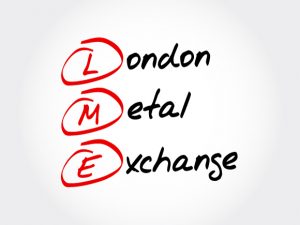LME’s proposed low-carbon ‘green aluminum’ contract faces industry opposition
Readers of a recent Financial Times article reporting the opposition of major primary aluminum producers Norsk Hydro and Hindalco Industries to the LME’s proposed “green aluminum” contract may feel the primary producers are swimming against the tide of history.
Aluminium is a core material needed for increasing efficiency and lowering carbon dioxide emissions by reducing weight and improving recycling. (Copper and lithium also fall under this category.)
Exhibiting low-carbon footprints themselves is increasingly becoming a deciding factor for manufacturers choosing one supply source over another.
Stop obsessing about the actual forecasted aluminum price. It’s more important to spot the trend. See why.
‘Green aluminum’ contract
The LME’s proposed “green aluminum” or low-carbon aluminum contract intends to help determine to what extent the global market is willing to pay a premium for aluminum that meets an as yet undetermined carbon threshold. That threshold is mooted in the LME’s Sustainability Discussion Paper, available here, to be about 4.5 kg of CO2 per kg of aluminum.
By contrast, the average for Europe is 8.6 kg. For China – where much of primary production is based on coal-fired power production – it is about 20 kg.
To be fair, the LME does not appear totally wedded to the idea yet.
It is consulting with the market to test the appetite for voluntary disclosure of a producing mill’s product. As such, a mechanism can be developed to measure the willingness of consumers to pay a premium for warrants that met a lower carbon content. Russia’s Rusal or En+ material and — ironically you may think in light of the opening paragraph — Norsk Hydro’s metal typically meets this low-carbon threshold. Much of their production is based on hydropower, with carbon contents estimated to be even below 4 kg.
Industry objections
Norsk Hydro is quoted as objecting to a separate contract because “a separate contract for low-carbon aluminum risked weakening standards and its own efforts to decarbonize the energy-intensive industry.”
“We are a little bit afraid you will commoditize a specialized product,” Norsk Hydro CEO Hilda Aasheim said. “There are a number of green products out there — you have to be precise about what is your [carbon] content, it’s not one standard calculation.”
Fair enough. Norsk Hydro, one suspects, does not want the LME setting the premium. Rather, it believes it can get a larger premium if there is no benchmark price discovery mechanism to compare against. Aluminum producers were the most strident in arguing against the LME originally launching an aluminum contract back in December 1978. Allowing the market to decide reduces producers’ power.
Hindalco also makes a fair point that primary smelting is only part of the story. In isolation, it ignores the energy-intensive nature of bauxite mining and alumina production. All of that is part of the final product’s carbon content, if one is correctly looking at this holistically.
Other objections are that if a separate low-carbon contract would dilute the liquidity of the standard aluminum contract. However, as many other metals achieve fair price discovery on much lower volumes, that appears like a low risk.
Aluminium is the highest-volume metal contract traded on the LME, with 488 brands approved. More of a risk is that a new contract would attract insufficient interest to achieve a meaningful level of liquidity. That may explain the LME’s proposed option of merely listing every brand’s carbon content on a voluntary basis. Such an arrangement leaves it to consumers to bid or pay a premium over standard high-grade 99.7% metal if they so choose for warrants with low-carbon credentials.
Low-carbon future
Not surprisingly, with En+/Rusal so actively promoting the idea, many producers suspect the Russian producer simply sees this as an issue of particular advantage to itself rather than to the wider market. For that reason alone, many producers are hesitant to support it.
But — and this is the big “but” — carbon content is a massive issue for the aluminum industry and for the wider manufacturing market.
Consumers are increasingly environmentally conscious, even if they’re not yet making decisions based on a product’s environmental footprint.
But the tide of history is flowing in one direction only — and the flow is picking up pace.
One suspects the LME is on the right track with this green aluminum contract idea, even if the details still need to be finessed.
Are you prepared for your annual aluminum contract negotiations? Be sure to check out our five best practices.




Leave a Reply